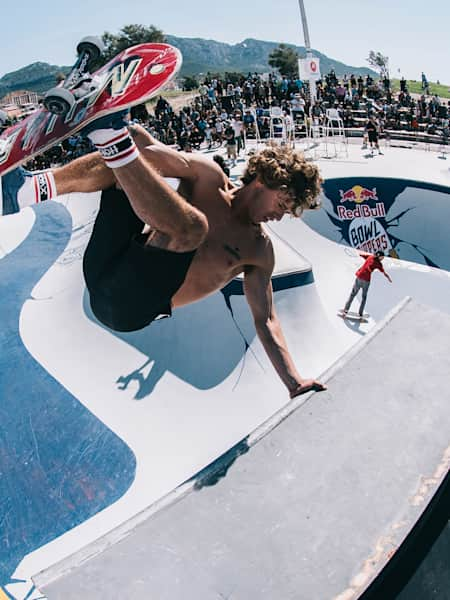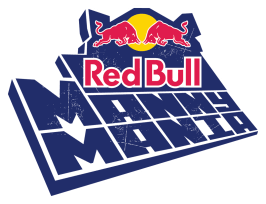Skateboarding

Skateboarding
Strength training for skateboarding: How to train effectively
Let's take a look at how to effectively incorporate strength training into your weekly routine.
Strength Training for Skateboarding: How to Train Effectively
Strength training and skateboarding aren't two activities that are typically paired together; however, when you combine them, the results are pretty spectacular. While strength training is not necessary to get better at skateboarding, it can help improve your skills and endurance in ways that skateboarding alone cannot. Every skateboarder knows that it takes a decent amount of strength and energy to get off the ground, so the stronger you are, the higher you can jump. Strength training can also increase your endurance, allowing you to skate for longer intervals and minimize injury from muscle fatigue.
Of course, the best way to improve your skateboarding skills is to spend time practicing your moves on the board; however, if you're looking to boost airs like Red Bull's Zion Wright, strength training is the way to go.
01
Four Strength Training Exercises for Skateboarding
Effective strength training for skateboarding can help you increase your endurance and maintain your balance and control. The following strength training exercises work vital muscles that are used while skateboarding so you can improve your overall game.
Lateral Leg Raises
For lateral leg raises, you want to stand with your toes facing forward, and knees slightly bent. To start, shift your weight to your right leg. Exhale as you raise your left leg out to the side as far as you can while making sure your pelvis remains stable, then inhale and lower your leg back down. Once you're done with your repetitions, switch legs. If you find yourself struggling with stability and balance, try holding onto the back of a chair. As your muscles become stronger, your balance will improve.
Box Jumps
You'll need a sturdy box to jump onto for this exercise. If you don't have your own equipment, a park bench will work. To start, drop into a proper squat and then exhale as you explode from the ground jumping onto your box or whatever equipment you're using. Jump back down, landing with good form in the starting squat position. Try to keep your transitions smooth and your landings silent.
Single-Leg Squats
You'll want a chair or couch when first trying this exercise. Once you have your seat positioned behind you, stand a few inches in front of it with your feet hip-width apart. Shift your weight to your right leg, inhale, and slowly squat down, letting your butt touch the seat behind you. Exhale while you rise back to a standing position, keeping your left leg raised off the ground throughout the entire movement. Complete your repetitions and then switch legs. If this seems too easy, you can try removing the chair or adding weight.
Side Plank
The side plank is an excellent exercise for your core, a primary muscle group used in skateboarding. To begin, lie on your left side with your right foot either stacked on top of your left foot or placed on the floor in front of your left leg. Exhale, contract your core, and raise your hips from the ground, so you're forming a straight line from head to toe. You can either raise up onto your left elbow or left hand, whichever is more comfortable for you. Make sure that you keep your elbow or hand in line with your shoulders. Hold for 30 seconds or more, and then switch sides.
02
Key Muscles Used While Skateboarding
You might not think that skateboarding uses a ton of muscles, but when you break it down, there are quite a few complex movements that use multiple different muscle groups.
Core
Your core muscles play a huge role in stabilizing your body and helping you maintain balance while skateboarding. The muscles that make up your core include your abdominal muscles, hip muscles, and back muscles. If you want a strong core, take a look at this ultimate core workout for beginners.
Quadriceps and Hamstrings
Your quadriceps and hamstrings are used quite a bit while skateboarding. The quadriceps are made up of four different muscles that help you extend your knee and contract your hip joint, which is required anytime you jump. Your hamstrings are also made up of four different muscles that allow you to flex your knee so that you can squat down. These are used anytime you crouch down on your skateboard.
Gluteus Maximus
The gluteus maximus lengthens from your hips to your hamstrings and is one of the largest muscles in your body. This muscle helps you keep your balance when you switch from squatting to standing on the skateboard.
Lower Legs
Your lower leg muscles include your calves and the tibialis anterior muscle around your shins. Your calf muscles allow you to point your toes downward, while your tibialis anterior muscle lets you tilt your heels down. Both of these movements are required to steer your skateboard.
03
Exercises to Take Your Tricks to the Next Level
The following are a couple of exercises to help with your switch and flicking skills. If you need some new moves, take a look at these five intermediate skateboarding tricks.
Switch Pop
Want to take your switch game to the next level like Red Bull pro skateboarder Lore Bruggeman? Try the switch pop. To do this exercise, you'll need a resistance band and a surface to jump onto. Place the resistance band just above your knees; be careful not to let your knees collapse while wearing the band.
Stand with the box or surface to your side so that you can jump sideways onto it. Shift your weight to the leg furthest from the box, so if the box is on your right, shift your weight to your left leg. Squat down, keeping your butt back, and explode up and sideways, landing softly on the elevated surface. Step down and repeat, but this time, as you jump, rotate your body so that you land facing forward. Gently lower back down. Do two to three sets of 10 jumps on each leg.
Kickflip
This exercise will help you improve your flick by strengthening your ankles. You'll need a chair and two resistance bands for this move. To start, place one band above your knees and the other around the arches of your feet. While sitting in the chair, put your feet and knees about shoulder-width apart, keeping a steady tension on the band above the knees. Keep your left foot flat on the floor while flicking your right foot outward. Do 20 flicks or as many as it takes for your muscles to feel tired, then switch feet. Aim for two sets.
If you're looking to up your skateboarding game and impress your friends, try incorporating two to three strength-training sessions into your weekly routine. Watch Red Bull's Skate Originals if you need inspiration. You'll be rocking the highest vertical at the skate park in no time.









